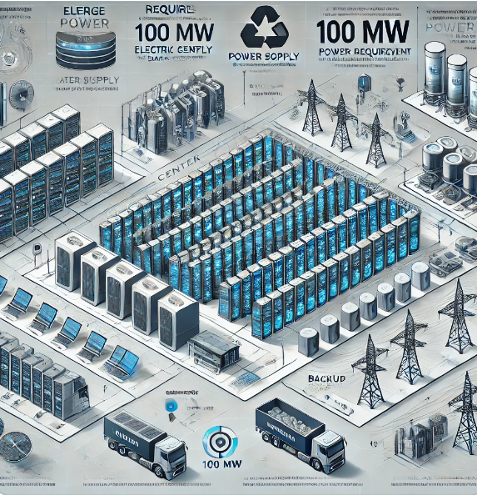
As data centers increasingly become power-intensive, driven by the rapid growth of artificial intelligence (AI) applications and machine learning workloads, the challenge of managing extreme large loads becomes critical. Typically, these data centers can start with a power demand of 50 MW when first built and can grow to 300 MW within three years. To put this into perspective, a 300 MW data center consumes roughly the same amount of power as 100,000 residential homes or a mid-sized city, highlighting the significant infrastructure and grid capacity needed to support such a load.
One of the significant challenges identified by industry experts is the current bottleneck in expanding the grid to accommodate these new large loads. The rapid growth of data centers, along with other large industrial consumers, has outpaced the current grid infrastructure and interconnection processes, leading to delays and complications. To address this, PJV is exploring innovative approaches to streamline interconnection procedures, enhance flexibility in power supply, and develop resilient solutions for fast-growing data environments.
Large AI data centers also present unique challenges related to grid interconnection, harmonics, voltage fluctuations, and the need for rapid power scaling. As the industry evolves, there is a pressing need to rethink traditional approaches and adopt new strategies that can facilitate the integration of these massive loads while maintaining grid stability. PJV addresses these challenges through detailed simulation and analysis, ensuring that energy strategies are robust, efficient, and capable of adapting to the evolving needs of high-demand data environments.
Our approach includes analyzing power requirements, assessing grid impacts, and developing resilient energy strategies tailored to AI-driven facilities. We consider factors such as peak load management, voltage stability, power quality, and the potential need for microgrid solutions or distributed energy resources to mitigate grid strain.
